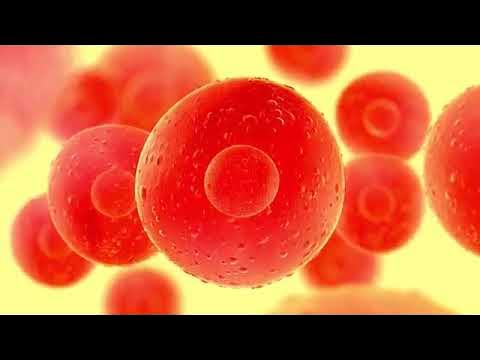A Woman's Journey Presents: Bone Up - Osteoporosis
Summary
TLDRمراسم تفاعلية شهرية تتضمن محاضرة من الدكتور كندال موسلي، متخصص العظم والسكري في جون هوبكنز، تناقش مرض العظم المضعف 'أوستيوبوروس'. تغطي المحاضرة العوامل التي تؤدي إلى العظم المضعف، وعوامل الخطر، وطرق التشخيص والأدوية، ونصائح لتحسين الصحة العضلية. كما تناقش النصائح الغذائية والنمط النشط، وتأثير الأدوية المخصصة على العظم، وكيفية التعامل مع العواقب الجانبية. وتتضمن المقابلة أسئلة متعددة من الحضور.
Takeaways
- 😀 هشاشة العظام تسبب أكثر من 8 ملايين كسر سنويًا على مستوى العالم، أي كسر واحد كل ثلاث ثوانٍ.
- 😀 يمكن أن يتسبب امتصاص الكالسيوم والفوسفات من العظام مع التقدم في العمر في ضعف العظام وزيادة خطر الكسور.
- 😀 هشاشة العظام هي اضطراب هيكلي منهجي يتميز بانخفاض كتلة العظام وتدهور الأنسجة العظمية مما يزيد من هشاشة العظام وقابليتها للكسر.
- 😀 غالبًا ما يتم اكتشاف هشاشة العظام بعد حدوث كسر، حيث تكون العظام قد تعرضت لفقدان كبير دون أن يلاحظ الشخص.
- 😀 النساء بعد سن اليأس أكثر عرضة للإصابة بهشاشة العظام بسبب انخفاض مستويات الإستروجين.
- 😀 ينصح بتناول الكالسيوم (1000-1200 ملغ يوميًا) وفيتامين D (600-800 وحدة دولية يوميًا) للحفاظ على صحة العظام.
- 😀 يشير مؤشر T-score إلى حالة العظام: T أقل من -2.5 يشير إلى هشاشة العظام، بين -1 و -2.4 يشير إلى انخفاض كثافة العظام، وأعلى من -1 يعتبر طبيعيًا.
- 😀 يتم استخدام أدوية مختلفة لعلاج هشاشة العظام، بما في ذلك الأدوية التي تقلل من تكسير العظام والأدوية التي تحفز بناء العظام.
- 😀 من المهم الحفاظ على نظام غذائي متوازن وممارسة الرياضة بانتظام، بما في ذلك المشي وتمارين المقاومة، لدعم صحة العظام.
- 😀 يجب على الأشخاص الذين يتناولون أدوية هشاشة العظام الالتزام بالجرعات المقررة وعدم التوقف دون استشارة الطبيب لتجنب تأثيرات ارتداد العظام.
Q & A
ما هي أمراض العظام ال脆ة أو أوستيبروزوس؟
-أوستيبروزوس هو حالة ت減ص في كثافة العظام وتتدهور الهيكل البيئي للأنسجة العازقة مما يزيد من خفة العظام وsusceptibility to fracture.
لماذا يجب علينا القلق من أوستيبروزوس؟
-نحن نهتم بأوستيبروزوس لأنها مرض صامت يمكن أن يؤدي إلى تلقيف العظم قبل الوعي بفقدان كبير في العظام، مما قد يؤدي إلى وفيات بسبب تلقيفات.
ما هي العوامل الرئيسية التي تؤثر على ت濃ة العظام؟
-العوامل الرئيسية تشمل العمر، الحالة пост الانmennopausa، الوزن الدني، الأدوية التي تؤثر على كثافة العظام، التبغ، الشرب، وتاريخ شخصي للتقلاع.
كيف يتم تحديد كثافة العظام؟
-يتم تحديد كثافة العظام باستخدام فحص DEXA، الذي يستخدم لتقييم العظم في ال_spine_ وال_hip_ والforearm في بعض الأحيان.
ما هي العوامل التي تجعل شخص مرشحًا لإجراء فحص DEXA؟
-النساء以上的 65 عامًا ورجال以上的 70 عامًا، وجود عوامل مخاطر للضعف في العظام، أو تاريخ تلقيف قد يدفع الأطباء لإجراء فحص DEXA.
ما هي الخطوات الطبية لعلاج أوستيبروزوس؟
-العلاج يشمل تغذية، الifestyle، وأدوية طبية، بالإضافة إلى المعالجة لأي مرض أو معالجا صحي قد يؤثر على كثافة العظام.
ما هي الفيتامينات والعناصر الأساسية لبناء العظام القوية؟
-الفيتامينات والعناصر الأساسية تشمل الكالسيوم والفسفور والبروتين، التي تساعد في تقوية العظام وجعلها قادرة على التحمل.
ما هي الأدوية التي تستخدم لمنع تلقيف العظام؟
-الأدوية التي تمنع تلقيف العظام تشمل الإسترازين والأدوية من فئة ال_bisphosphate_ مثل الendronate وDenomab.
ما هي الأدوية التي تعزز بناء العظام؟
-الأدوية التي تعزز بناء العظام تشمل teriparatide وabaloparatide، التي تتطلب حقن يومي، وكذلك روموسوزماب التي تتطلب حقن شهري.
هل يمكن أن تؤدي الأدوية لعلاج أوستيبروزوس ل_EFFECTS_ جانبية؟
-نعم، يمكن للأدوية لعلاج أوستيبروزوس أن تؤدي لبعض التأثيرات الجانبية مثل الألم في العظام والضعف، وفي بعض الحالات العظم ال臼ية الميتة أو تلقيفات غير النموذجية.
ما هي النصائح النهائية من النص قبل الانتهاء؟
-النصائح النهائية تشمل ضرورة اتخاذ ال足够的 كالسيوم والفيتامين D، الrecognition أن التقلاع ليس طبيعيًا وينبغي التعامل معه على الفور، وأهمية التعامل مع الأمراض التي قد تؤدي إلى أوستيبروزوس.
Outlines

This section is available to paid users only. Please upgrade to access this part.
Upgrade NowMindmap

This section is available to paid users only. Please upgrade to access this part.
Upgrade NowKeywords

This section is available to paid users only. Please upgrade to access this part.
Upgrade NowHighlights

This section is available to paid users only. Please upgrade to access this part.
Upgrade NowTranscripts

This section is available to paid users only. Please upgrade to access this part.
Upgrade NowBrowse More Related Video
5.0 / 5 (0 votes)






